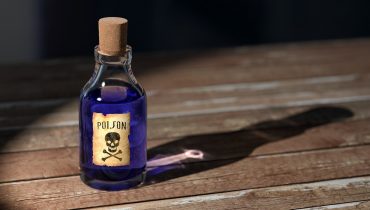Collagen and elastin are both important structural proteins. They are often referred to as ‘youth proteins’ because of the important role they play in keeping your skin firm and smooth.
While the two protein fibres do help keep your skin looking young, they are quite different in terms of structure and function.
Let’s look at each in detail.
Collagen
Collagen is the most abundant protein in your body. It is found in the tendons, cartilage, blood vessels, bones and your skin.
The main role of collagen is to give tissues their structure and keep them firm.
A good way to visualize collagen is to compare them to the long cables used in suspension bridges. They are not completely rigid but they have very little give. They are also very strong.
That’s how collagen fibres are.
They are not completely rigid. Part of the reason you can pull on your skin and it goes back into place after you release it is because of collagen.
Collagen molecules go back to their original position after stretching.
But collagen doesn’t stretch very far because of how its molecules are arranged. In fact, the fibres will break if stretched more than 10% of their normal length.
Elastin
Elastin is called so because of its highly elastic nature. You can stretch elastin fibres up to 200% of their resting length.
This elasticity is crucial in tendons, arteries, lungs, cartilage and of course the skin.
When you pull your skin, it easily goes back to its original position without any permanent deformities. That’s because it contains elastin.
Elastin has more give than collagen thanks to its random arrangement of molecules. But it is not as strong.
A good way to visualize how elastin works is to stretch a rubber band. It can stretch double or triple its length but will immediately go back to its initial size when you release it.
But pull on it too hard and it breaks.
Collagen on the other hand is more like a shoestring or those suspension bridge cables we mentioned.
If you pull on a shoestring with both hands, there will be very slight stretching. It’s almost impossible to extend it a couple of inches beyond its normal length.
It also takes more force to break it.
Collagen, Elastin and Aging
Researchers have linked the loss of collagen and elastin in the body to aging effects such as fine lines, wrinkles and sagging skin.
At about the age of 25, your collagen reserves begin to decline. With every decade of your life, collagen fibres become less elastic and lose the ability to give structure and firmness to your skin.
Elastin takes the same route. By your 40th year, there is very little of it being produced. Existing fibres loose structure and elasticity.
That’s when the first wrinkles begin to appear.
Chemicals, pollution, smoking, poor diet and UV exposure can all increase the rate at which you lose elastin and collagen.
But even if you follow a healthy lifestyle and avoid smoking, it is inevitable that these proteins will experience degradation.
One study found that even on parts of the skin that don’t get exposed to the sun, elastin fibres had experienced loss of elasticity and resilience by the age of 70.
Anti-aging Collagen and Elastin Products
You most likely have come across anti-aging products that claim to increase the amount of collagen or elastin in your body.
The most common are elastin and/or collagen creams and lotions.
But the scientific evidence for these anti-aging products is not very strong. There are no studies showing that your body can absorb collagen or elastin molecules through the skin.
The best these products can do is reduce how quickly your body loses these proteins and help your body keep making more of them even as you age.
But they will not replace lost collagen or elastin.
If you are going to take any products to boost your elastin and collagen levels, research says supplements are your best bet.
Various studies have shown that taking collagen/elastin supplements makes a significant difference in the firmness and overall appearance of the skin.
They can also help reduce muscle loss in older individuals.
An alternative that you can consider are infrared lamps like this one by Beurer, which can help to increase your collagen production.
Your lifestyle matters a lot too. Eat a nutritious well-balanced diet, stay active, do not smoke and take good care of your skin.


